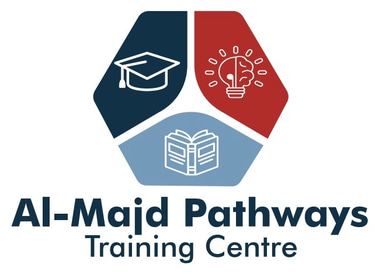
Advanced Electrical Engineering
Electrical & Instrumentation
£6800.00£6200.00
INTRODUCTION
Electrical Engineering is the comprehensive field that encompasses research, development, manufacturing, installation, operation, maintenance, and management of equipment, plant, and systems within the electrical, electronic, communication, and computer systems domains. These activities are vital across various sectors, including electricity generation, transmission, distribution, electrical installations, electrical equipment manufacturing, instrumentation, control systems, communication networks, electronic equipment, and computer system integration and control.
The Al-Majd Pathways Centre (APC) presents an interactive Electrical Engineering Advanced Workshop aimed at providing participants with an in-depth understanding of power stations, transmission & distribution systems, and zone substations, encompassing both primary and secondary systems. This training equips professionals with essential skills such as power system studies, transmission systems considerations, LV and MV distribution system design, substation equipment selection, power system protection & automation, and earthing system design. By applying these engineering skills to real-world challenges, participants will gain valuable insights and enhance their problem-solving capabilities.
TRAINING OBJECTIVES
Advanced Electrical Engineering Course aims to enable participants to achieve the following objectives:
Model a power system using system parameters.
Create various load flow scenarios through different switching regimes.
Analyse and interpret the power system's response to different scenarios.
Modify the power system's behavior within an area by enhancing system parameters.
Determine the location and busbar configuration of a typical substation.
Propose specifications for major substation equipment.
Generate single-line diagrams, layouts, and schematic diagrams.
Calculate fault levels and loadings of feeders and branches.
Analyse protection logics and coordination between protection devices.
Establish communication between protection devices and controllers.
WHO SHOULD ATTEND?
Al-Majd Pathways Centre (APC)'s Advanced Electrical Engineering training course is suitable for a wide range of professionals, including but not limited to:
Senior / Principal Engineers
Project Engineers / Professionals
Intermediate Engineers
Graduate Engineers
Technicians and System Operators
TRAINING METHODOLOGY
Advanced Electrical Engineering course combines presentations with interactive practical exercises, complemented by video materials, activities, and case studies. Delegates are encouraged to actively participate and bring technical issues from their workplace for discussion during the training.
TRAINING OUTLINE
Day 1: Power System Parameters and Response
Important power system studies
AC power transmission
Power system drawings
Power stations
Grid network
Smart grid
Power transmission security
Power distribution factors
RLC equations
Generator over-excitation
Complex power flow on a transmission line
Sinusoids & phasors
Phasor relationships & equations
Power types & formulas
Power system symbols
Voltage regulation
Synchronous generator model
Single-line diagram (SLD)
Impedance model
Maximum power delivered by synchronous generator
Reactive power flow
Steady-state stability
Transient stability
Rotor angle stability
Day 2: Transmission System Design Considerations
AC transmission
Grid network features
Transmission security
Building up impedance models
Complex power definitions
Power factor
Power factor compensation (PFC) techniques
Shunt reactor compensation
Minimum clearance distances
Line voltage drop
Electrical loads types and behavior
Single wire earth return (SWER)
Balanced 3-phase system
Unbalanced 3-phase systems
Symmetrical components
Sequence networks
Wye-connected & delta-connected loads
Voltage regulation
Power angle & power transfer
Steady-state stability limit
Transmission line terms (span, sag, cross arm, clearance)
Transmission line surge impedance and propagation
Overhead line conductors (AAC, AAAC, ACSR)
Bundled conductors
Overhead line insulators
Line supporting structures (wood & concrete poles, towers)
Power transfer capability, current carrying capacity
Transmission line loadability
Day 3: Distribution System Design Considerations
Load models
Typical characteristics of an industrial distribution system
Distribution system types and components
Electrical safety & power security
Voltage classification
Multiple voltage levels in power distribution
Distribution configurations and redundancy
Distribution expandability
Distribution system planning
Electricity demand & future growth
Equipment sizing / ratings
HV power cables types & sizing
Selection of appropriate equipment
System studies & software packages
Embedded (in-plant) generation
Parallel operation of utility with embedded generation
Integrating embedded generation with plant distribution
Day 4: Power System Protection
Protection objectives
Protection sensitivity, stability, and reliability
Main & backup protection
Symmetrical & asymmetrical faults
Power system stability
Impacts of electric faults
Fuse protection
Circuit breaker protection
Relay protection (types, functions, construction, technology)
Trip circuit supervision (TCS)
Per Unit (PU) system
Fault calculations
Protection zones & overlap
Short circuit capacity (SCC)
Balanced 3-phase fault
Unbalanced single-phase-to-ground fault
Unbalanced phase-to-phase fault
Unbalanced phase-to-phase-to-ground fault
Fault indicator
Overcurrent protection
Earth fault protection
Lightning protection
Day 5: Substation Major Equipment, Earthing and Safety
Circuit breaker types & applications
Switchgear types, components, and applications
Auto-reclosers
Sectionalizers
Disconnect switches
RMU’s
Earthing switches
SF6 properties
GIS substations
HV cables types & calculations
Power & distribution transformers
Batteries & battery chargers
Power conditioner
Ungrounded vs. grounded systems
Touch & step voltages, mesh voltage
Earth potential rise (EPR), transferred voltages
Soil resistivity
Verification of adequacy
Lightning protection techniques (rolling spheres, cone of protection)
Embedded generation
Power quality (harmonics, voltage flicker)
Clearance distances
Certificate of Completion: Upon successful completion of the course, participants will receive a Certificate of Completion from Al-Majd Pathways Centre (APC).
Get in touch with us today.
Follow
Sign-up for our newsletter
0044 7466410010
©2025 All rights reserved.
